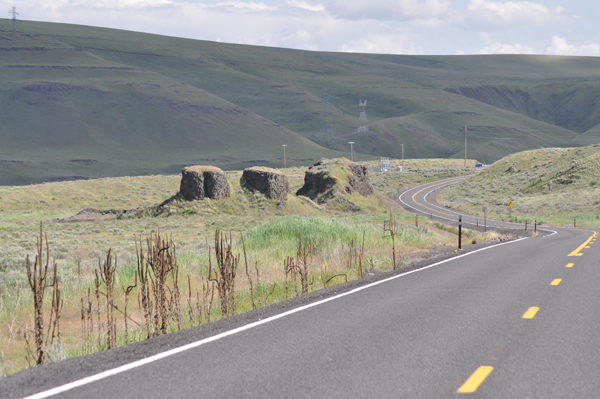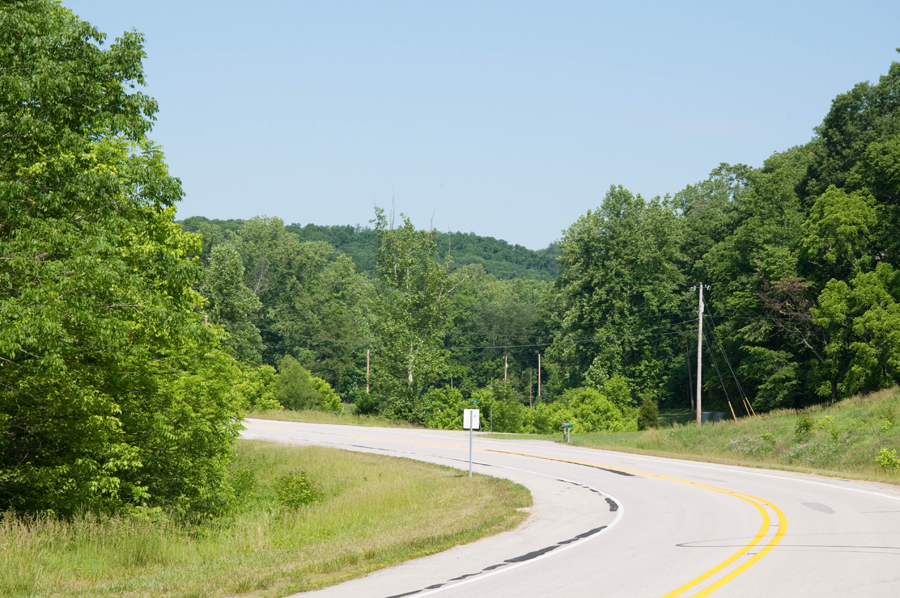Recently I was looking for this picture of an artfully rusted steam engine that I took during a cross-country trip in 2009.
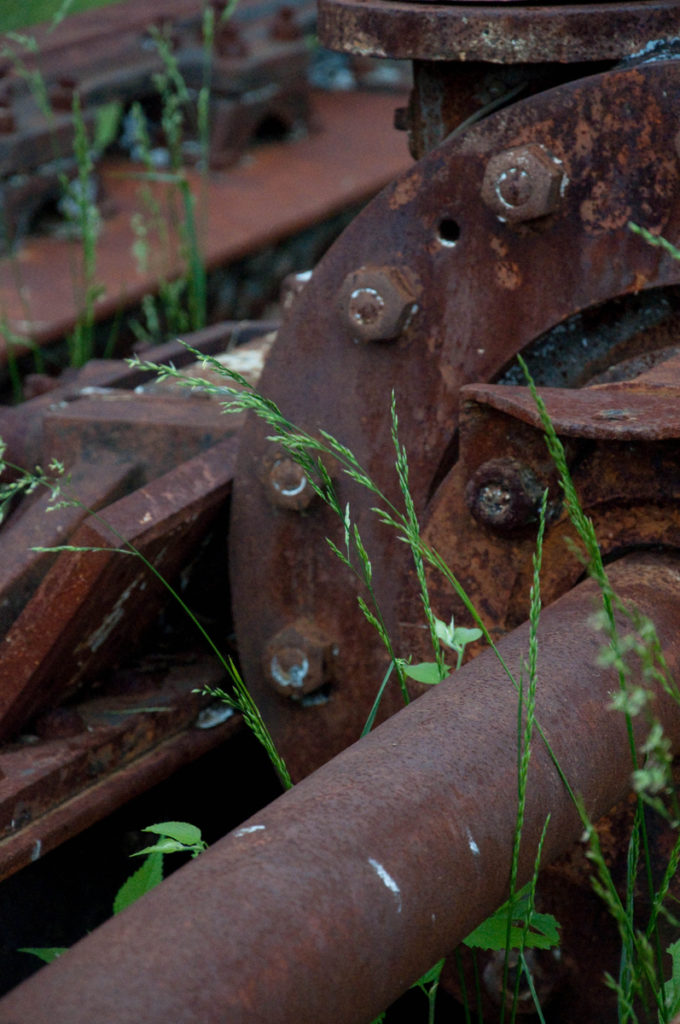
Rather than dig through the many thousands of photographs on the back-up server, I searched through the series of blog entries titled It’s a Big Dam Country that I wrote while on that road trip. When I began that trip I was running very hard, and very fast, and very much away. I was running from myself and my itching demons. I was running on professional advice. I was making no progress while standing in the middle of the smoking crater that I had made of my life. My therapist — against all the rules of therapy — actually suggested that I go ahead and run for a while, to see what it felt like to move again. So I did. I packed up my little blue car with a handful of road snacks, my special pillow, and every scrap of camera gear that I owned, then set out on the finest fool’s errand I could conjure: To attend the graduation party of my oldest niece two weeks hence in the city of Pittsburgh and along the way to take as many pictures of as many dams as I could find.
I left a home on a rainy day in May and headed east. I found my first few dams in the flatness of eastern Washington along the Columbia river and it’s tributaries. Dams with evocative names like Lower Monumental Dam and Priest’s Rapids Dam. The next day I met up with the Clearwater river in Idaho. A fast river with no dams; it was good company for the better part of a day. After that it was into the mountains of Idaho and on to Montana where I picked up the headwaters of the Missouri River.
Eastern Montana and South Dakota is big empty country, miles and miles of space with no one around. I was running from myself in middle of a landscape that frequently seemed to have no up, down, east, or west, just vastness. The kind of vastness that left a two-story brick school-house from the late 19th century in the middle of a grassland with no sign of human use other than a derelict fence to keep the cattle off the road.
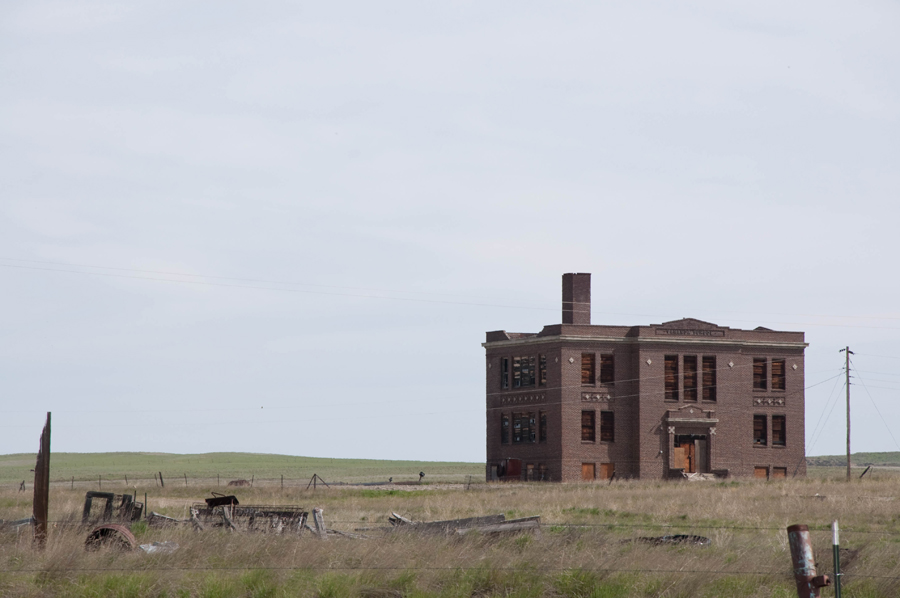
I navigated from dam to dam traveling on older start highways and local roads that followed the rivers. Rivers and roads are different creatures. Rivers can only go down hill. Roads go where ever we make them go. At the beginning of the human use of this territory getting from one place to another was done almost exclusively by following rivers. Roads, and later railroads, ran with the same reference to the geography and geology. Traveling on these roads you are in the territory as you pass through it. Each feature of the terrain followed logically from the last, a river, a valley, a gap in the hills, the next valley.
Increasingly though, we build roads that are not related to the natural paths that we used to follow. Now our interstates route us straight from one place to another without the need to worry about the geography and geology of the terrain. We bulldoze, blast, and scrape our way directly from point A to point B. When we travel on these roads, there is no sense of going through anywhere. Sometimes there is not even a sense of direction. What cross-country traveler has not, in the middle of the wide open spaces, gotten turned around on an interchange only to discover two hours later, when you have arrived back in the same town that you left this morning, that you have been going in the wrong direction? There having been no distinguishable features for the last 100 or so miles to show that you were traveling in the wrong direction. No small towns to recognize. No historical markers. No large signed gate to a remote ranch. Nothing. Traveling on these new roads gives us only featureless expanse of time that we must sit through to get from here to there. It is the same experience as flying from coast to coast seeing only a vaguely brown carpet below. There is no need to acknowledge the twenty-five hundred miles of country underneath you.
The three thousand miles that I drove between Seattle and Pittsburgh followed the rivers as closely as it could. Going from one dam to the next on the country’s two and four lane undivided roads, I found myself traveling through places instead of just by them. It suited the purpose of the drive. To find myself by losing myself in the larger (very much larger) territory of the country and it’s mountains, rivers, lakes and the hugely un-human scaled dams.
By not bulldozing my way along the interstate from Point A to Point B, I was able to find wonderful things like this dinosaur mounted cowboy in Lemmon, SD.
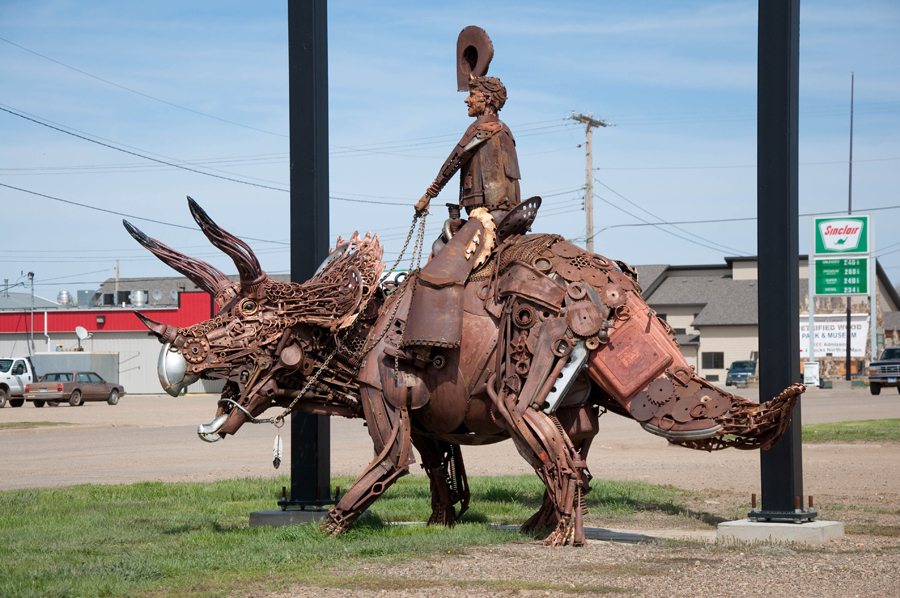
As well as discovering what I now regard as the American capital of What The Fuckitude: Dana, Indiana. A place that contains not only the worst public mural I have ever seen and a cross-dressing giraffe, but also the Ernie Pyle museum and this sign.
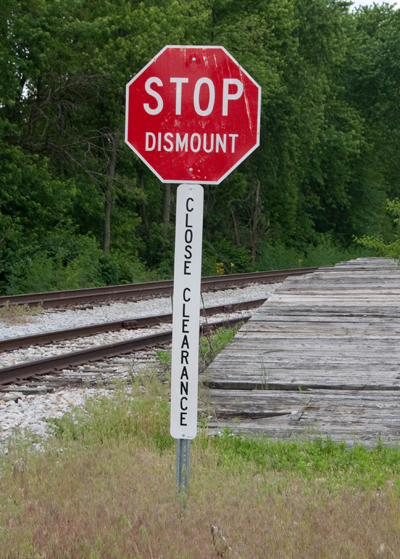
Close Clearance?
Make of that what you will.
Aside from the absurd, and there was plenty of absurd, there was also the sublimely beautiful. Both natural beauty like a quiet stretch of the Clearwater River and man-made treasures like the tracery on the steeple of an abandoned church that I found in the middle of a plowed field in North Dakota. And there were moments of unanticipated joy, like discovering a field in a county park dedicated solely to kite flying.
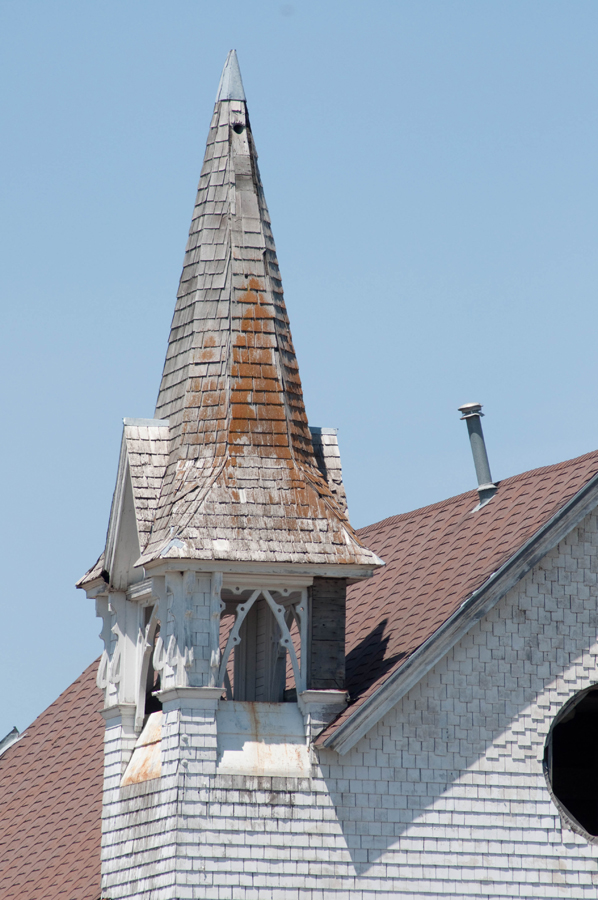
However, it was the dams that I was looking for. A dam is specific subspecies of human structure. It doesn’t contain us like a house or a church or an office building. It doesn’t carry us from place to place like a road or a bridge. A dam exists explicitly to interfere with the natural order. Dams contain and control rivers. The sheer bulk of a dam — the amount of concrete, earth, and steel, that it takes to control a river makes the power of the rivers evident. Dams succeed, and don’t succeed, like any human endeavor but always the river is trying to undo the damn and to go on its way along its natural course. As metaphor seeking humans how can we not see the river and the dam as representing ourselves? How can we not compare constant flow of water to the constant change in our lives, to the passage of time, to the flow of thought and emotion? How can we not see that our own attempts to control the flow of these things is the equivalent of building dams on rivers? As attempting to insure that we have water when it’s needed and to guarantee that the water will not rise to cover us when there is too much?
Dams are massive on an unimaginable scale. So big that you cannot place the human figure for perspective. You need the rivers and the created lakes to give scale to the dams. From a distance dams are majestic and overwhelming. While they are awe-inspiring from a mile away, they are not actually interesting until you start to get close to the leviathan. It’s only when you can see the individual parts that make up the structure that you can relate them to a human scale. The scale comes into focus when you look at this lock gate and understand that the turnbuckle is the size of a man’s torso.
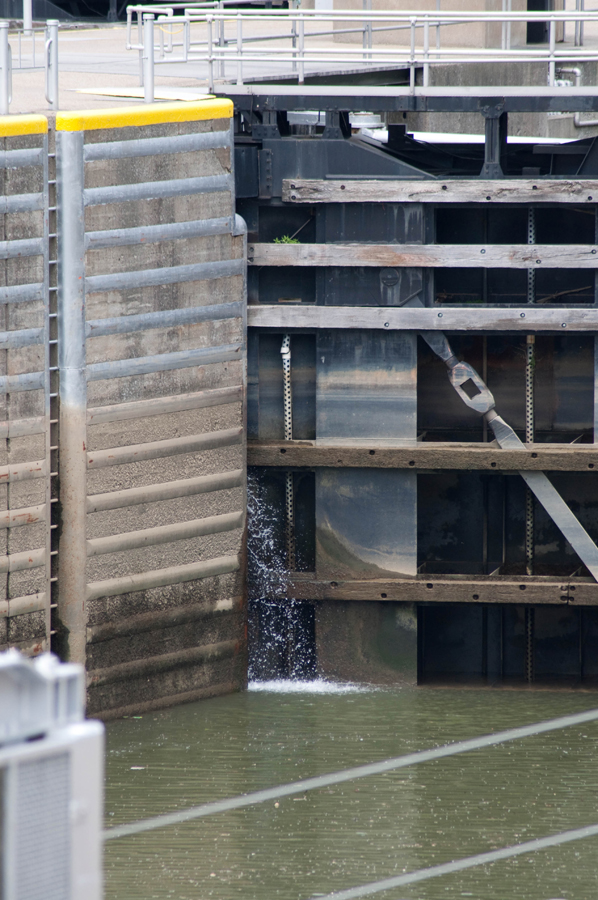
Or when you realize that there is room for thousands of swallows to have nested on the underside of the roadway that tops the dam. While you stand on the dam’s wing and those thousands gyre and wheel above your head in the twilight you gain some sense of how much room a dam takes up.
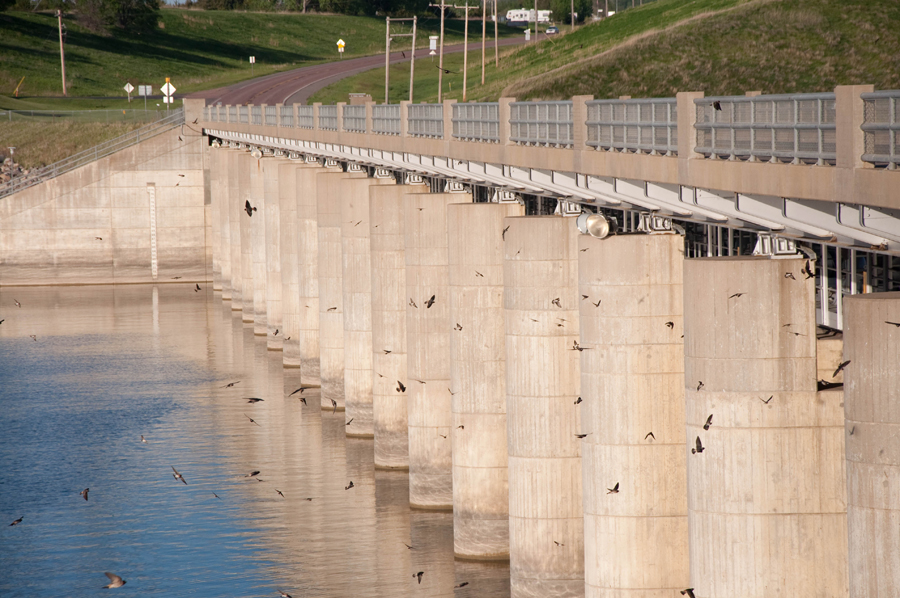
So there I was on the road in a fast little two-seater, the passenger seat occupied by my camera gear. I was utterly alone with myself and grateful for the solitude. I was chasing down dams, taking pictures, and writing travel notes every evening, just as I had planned for the first part of my journey. The second goal had been to reach Pittsburgh, PA in time for my niece’s graduation party. Which I did with 24 hours to spare. I spent a couple of days with family there and then at the invitation of my youngest sister went on to Louisville, KY for another family visit. Those times that I spent with other people, when I stopped to see family or friends, seemed to pick themselves out of the trip and float above it. Like islands in the middle of those rivers I was trailing.
The meandering bit of the journey that connected the islands of Pittsburgh and Louisville, my journey down the Ohio River Valley, brought a different sense of what going through the territory could mean.
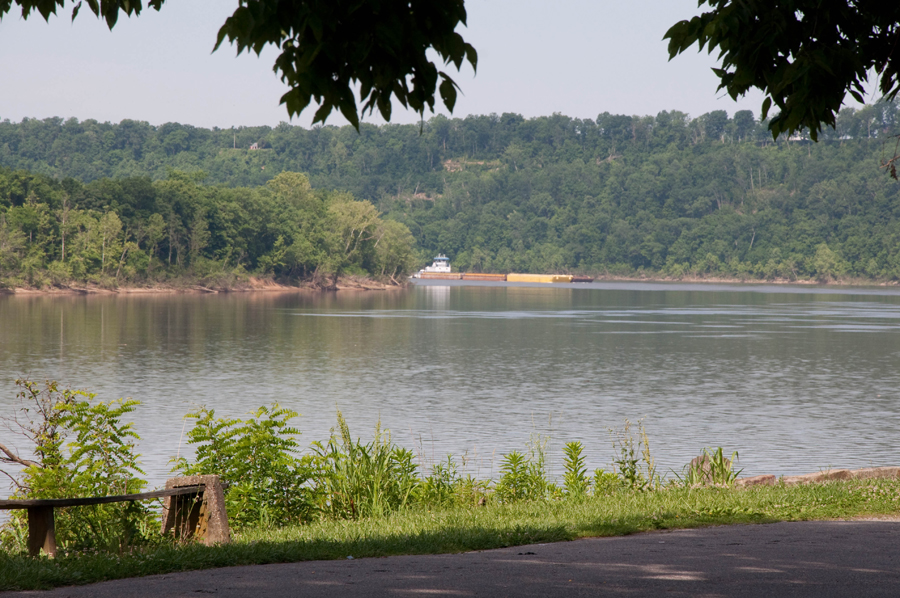
The Ohio river is one of the three rivers of my youth: the other two being the Allegheny and the Monongahela, which meet at Pittsburgh to form the Ohio. I had never seen the Ohio river outside of Allegheny county. To have lived so close to a thing like that and never to have followed it from its birth place at Fort Pitt to its eventual death and dissolution at the Mississippi in Cairo, IL — what does that say? Though in my defense I have gone upstream on both the Allegheny and the Monongahela and seen many of the other rivers in western and central PA. But I had never followed the Ohio out of that watershed and down to its end.
The Ohio River Valley is not an open expanse like much of the West. It is closely wooded and the vistas are not unlimited. You are never far from the next town and the evidence of mankind is everywhere, even in what seem to be the loneliest places in the valley. You can not imagine yourself as the only person in the world here. And yet — there are similarities. The small roads of the East, like those of the West, follow the ways of the territory. The real world lives close on either side of the road. From the very real possibility that there are deer waiting to ambush you around the next bend, to the opportunity for an ice cream cone at the gas station with the old Sinclair running dinosaur still painted on its side. The Ohio River Valley landscape was entirely familiar and I was entirely at ease in it. There were moments of pure happiness here. Like the wrong turn that led me to the discovery of this little car ferry in Sistersville, West Virginia.
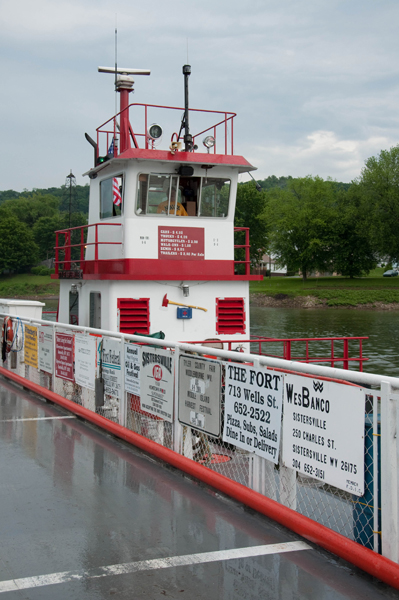
You drive down the ramp at the edge of the river and flash your headlights three times. The ferry comes across the river and for $4 you get a ride to the other side and a chat with the big cigar chewing fellow who runs it. I drove off of the ferry on the Ohio side and headed out on the Ohio River Scenic Byway across Ohio and into Indiana before turning south into Kentucky and to my sister’s home in Louisville. From Louisville I continued to follow the Ohio River along the southern Indiana and Illinois borders until it met the Mississippi at Cairo IL. Cairo was the saddest part of my journey and the one part that I did not photograph. It was a town of deserted streets, substantial buildings with boarded up windows, and suspicious eyed young men on street corners. The fact that it had once been prosperous and lively was evident every where. The fact that it was now abandoned was also evident. I could not bring myself to photograph a haunted town while it’s equally haunted residents watched. I have sense had the same reaction in dying western agricultural towns. The act of photographing the slow decay while the few remaining residents walk from the diner to the post office past the closed hardware store and movie theater is just too much of a betrayal of their humanity.
From Cairo I began my return trip — following the Mississippi north. Parts of the return trip were a battle between my desire to head home as quickly as possible using the interstates and my desire to leave the interstates far behind. In the middle of Iowa the interstate was winning until somewhere around Sargent’s Bluff where I had the motorists’ equivalent of a flashback freak-out and took the first turn north off of I‑29. It didn’t work out immediately as I spend several hours negotiating construction detours but I was back on the small roads and back in the good head space. The return tip held its share of the sublimely weird and the beautiful. From the statue of Lou the fish proclaiming Madison, MN the lutefisk capital of America to a late in the day picnic lunch in next to the Yellowstone river in Montana in the company of 20 or so goldfinches and a pocket gopher. At Yellowstone the next day’s weather forecast showed snow barreling down from Canada toward western Montana and I made a mad dash for home.
In all I was on the road for 25 days. I drove 6804 miles, saw 19 dams, took 3133 pictures, and spent $376.86 on road food. It was a lonely trip; I craved being alone at that point. I needed to hear myself think, no matter how unpleasant those thoughts might be. I was traveling down the rivers and stopping at the dams and making a path through the crap in my head. All that vastness rather than making me feel small made me feel much larger. Seeing the territory, geography, and geology that I was traveling through made it clear to me that I had similar vastness in me. There were so many roads of so many sorts: the narrow straight two lane roads that run parallel to the wide corn fields in Iowa, the gently curving roads alongside the Missouri River, and the happily twisting roads that led through Hoosier National Forest as it wove up and down the hills of South Indiana. Each road with its own mood and reflecting its terrain but always leading somewhere with real country on both sides. Old roads, following old paths.
We have a tendency, when life gets hard and confusing to want to call in the civil engineers. To have them build dams to control the rivers carrying us away or bulldoze through the rough places and build straight, smooth roads that take us from where we are to the place of comfort where we want to be. But dams don’t stand forever and dammed rivers lose their vitality. And those new roads take us from place to place without letting us learn anything about the territory in between. Perhaps we need to let the rivers have their heads and occasionally rearrange the territory a bit. Perhaps those old roads, the ones that follow those wild rivers, are the ones that take us through the places that we need to go.
In some ways the trip was a total failure I came home holding the same poisonous things in my head and my heart that I had run from. The road didn’t blow them out of my head. Instead it blew them back in, along with the fresh air that I would eventually use to understand them. Now, seven years later, I look back and understand that the point of the journey was to run and in running to learn that the only way to escape what you’re running from is to run through it. The territory between where we are now and where we will be next is the territory that we must understand. And the old road is the road we must take if we want to learn that territory.
